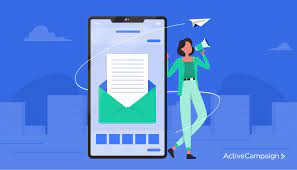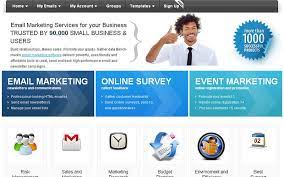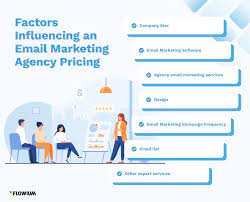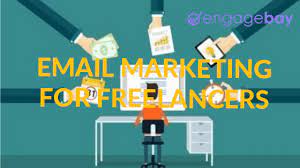Local Email Marketing: Boosting Your Business in Your Community
In today’s fast-paced digital world, email marketing has become a powerful tool for businesses to connect with their target audience. While many businesses focus on reaching a global market, local email marketing offers unique advantages for those wanting to make an impact within their community. In this article, we will explore the benefits of local email marketing and how it can help boost your business.
- Targeted Audience: One of the main advantages of local email marketing is the ability to reach a highly targeted audience. By focusing on your local community, you can tailor your message to resonate with the specific needs and interests of your target customers. This targeted approach allows you to create personalized content that speaks directly to your audience, increasing engagement and conversion rates.
- Building Relationships: Local email marketing provides an opportunity to build strong relationships with your customers on a more personal level. By sending regular updates, promotions, and exclusive offers via email, you can nurture customer loyalty and trust. Engaging with your local audience through emails allows you to establish yourself as a trusted expert in your field and fosters a sense of community around your brand.
- Increased Visibility: When you focus on local email marketing, you have the advantage of being visible within your community. By regularly appearing in their inbox, you stay top-of-mind for potential customers who may need your products or services in the future. This increased visibility helps build brand recognition and positions you as a go-to resource within your local market.
- Cost-Effective Strategy: Local email marketing is a cost-effective strategy compared to traditional advertising methods such as print media or billboards. With minimal expenses involved in setting up and maintaining an email marketing campaign, it offers excellent return on investment (ROI). You can reach a large number of potential customers at a fraction of the cost compared to other forms of advertising.
- Measurable Results: One of the significant advantages of email marketing is the ability to measure and track your campaign’s success. With various analytics tools available, you can monitor open rates, click-through rates, and conversions. This data allows you to refine your strategies, optimize your content, and make data-driven decisions to improve your campaign’s effectiveness.
- Local Partnerships: Local email marketing also opens up opportunities for collaborations with other businesses in your community. By partnering with complementary businesses, you can cross-promote each other’s products or services through email campaigns. This mutually beneficial relationship not only expands your reach but also strengthens your ties within the local business community.
In conclusion, local email marketing offers a powerful way to boost your business within your community. By targeting a specific audience, building relationships, increasing visibility, and enjoying cost-effective results, you can create a strong presence in your local market. Embrace the power of email marketing and leverage its potential to connect with your local audience for long-term business growth.
Frequently Asked Questions: Local Email Marketing Best Practices, Campaign Creation, Measurement, Advantages, Targeting, and Tools
- What are the best practices for local email marketing?
- How can I create an effective email marketing campaign for my local business?
- How do I measure the success of my local email marketing campaigns?
- What are the advantages of using local email marketing over other forms of advertising?
- How can I make sure that my emails reach the right people in my local area?
- What tools or software do I need to set up a successful local email marketing campaign?
What are the best practices for local email marketing?
When it comes to local email marketing, implementing best practices can significantly enhance the effectiveness of your campaigns. Here are some key practices to consider:
- Build a Local Email List: Start by building a dedicated email list of local subscribers who have opted-in to receive communications from you. Offer incentives such as exclusive discounts or valuable content to encourage sign-ups.
- Personalize Your Content: Tailor your email content to resonate with your local audience. Use language, references, and images that reflect the community you serve. This personal touch helps create a stronger connection with your recipients.
- Segment Your Audience: Divide your email list into segments based on location, interests, or demographics. By segmenting your audience, you can deliver more targeted and relevant content that appeals to specific groups within your community.
- Localize Subject Lines and Preheaders: Use location-specific subject lines and preheaders to grab the attention of recipients and increase open rates. Including the name of the city or region in these elements can pique curiosity and make your emails more relevant.
- Provide Valuable Local Information: Share useful information about local events, news, or resources that are relevant to your audience’s interests. This positions you as a valuable source of information and strengthens your connection with the local community.
- Include Location-Specific Offers: Offer exclusive promotions or discounts tailored specifically for customers in your area. This makes them feel special and encourages them to take action.
- Optimize for Mobile Devices: Ensure that your emails are mobile-friendly as a significant portion of people read emails on their smartphones or tablets. Use responsive design techniques to ensure a seamless experience across different devices.
- Call-to-Action (CTA): Clearly state what action you want recipients to take in each email and make it easy for them to do so by including prominent CTAs. Whether it’s visiting your store, attending an event, or making a purchase online, a compelling CTA can drive conversions.
- Test and Analyze: Regularly test different elements of your emails, such as subject lines, content, visuals, and CTAs. Analyze the results to understand what resonates best with your local audience and refine your strategies accordingly.
- Maintain Consistency: Be consistent in your email marketing efforts by sending regular communications to your local audience. This helps keep your brand top-of-mind and reinforces your presence within the community.
By following these best practices, you can maximize the impact of your local email marketing campaigns and effectively engage with your target audience in a meaningful way.
How can I create an effective email marketing campaign for my local business?
Creating an effective email marketing campaign for your local business requires careful planning and execution. Here are some key steps to help you get started:
- Define Your Goals: Clearly define your objectives for the email marketing campaign. Are you looking to increase sales, promote a new product or service, drive traffic to your website, or build brand awareness? Having specific goals will guide your strategy and help measure success.
- Build a Targeted Email List: Develop a quality email list by capturing contact information from your existing customers, website visitors, or through lead generation tactics like offering incentives or exclusive content. Ensure that subscribers have given consent to receive emails from you.
- Segment Your Audience: Divide your email list into segments based on demographics, interests, purchase history, or any other relevant criteria. By segmenting your audience, you can send more personalized and relevant content that resonates with each group.
- Craft Compelling Content: Create engaging and valuable content that addresses the needs and interests of your target audience. Use a conversational tone and keep the message concise and focused. Include a clear call-to-action (CTA) to encourage recipients to take the desired action.
- Design Eye-Catching Templates: Design visually appealing email templates that align with your brand identity. Ensure that they are mobile-friendly and optimized for different devices and email clients.
- Personalize Your Emails: Personalization is crucial in email marketing campaigns. Address recipients by their names and consider tailoring the content based on their preferences or past interactions with your business.
- Test and Optimize: Before sending out emails to your entire list, conduct A/B testing on subject lines, CTAs, designs, or content variations to identify what resonates best with your audience. Analyze metrics such as open rates, click-through rates, and conversions to optimize future campaigns.
- Timing and Frequency: Determine the optimal timing and frequency of sending emails based on your audience’s preferences. Avoid bombarding their inboxes, but also maintain regular communication to stay top-of-mind.
- Monitor and Analyze Results: Track the performance of your email campaigns using analytics tools. Monitor key metrics such as open rates, click-through rates, and conversions. Use this data to refine your strategies and improve future campaigns.
- Provide Value and Build Relationships: Focus on providing value to your subscribers rather than solely promoting your products or services. Share useful information, tips, exclusive offers, or industry insights that resonate with your audience. Building relationships based on trust and value will lead to long-term customer loyalty.
Remember to comply with email marketing regulations and provide an easy way for recipients to unsubscribe if they no longer wish to receive emails from you.
By following these steps and continuously refining your approach based on data-driven insights, you can create an effective email marketing campaign that drives results for your local business.
How do I measure the success of my local email marketing campaigns?
Measuring the success of your local email marketing campaigns is crucial to understanding their effectiveness and making data-driven decisions to improve your strategies. Here are some key metrics and methods you can use:
- Open Rate: The open rate measures the percentage of recipients who opened your email. A higher open rate indicates that your subject line and sender name were compelling enough to capture recipients’ attention. You can calculate the open rate by dividing the number of unique opens by the number of delivered emails, then multiplying by 100.
- Click-Through Rate (CTR): CTR measures the percentage of recipients who clicked on a link within your email. It helps determine how engaging your content and call-to-action are. To calculate CTR, divide the number of unique clicks by the number of delivered emails, then multiply by 100.
- Conversion Rate: Conversion rate measures the percentage of recipients who completed a desired action, such as making a purchase or filling out a form after clicking on a link in your email. This metric directly reflects how effective your email campaign is at driving desired outcomes.
- Bounce Rate: Bounce rate indicates the percentage of emails that were undeliverable due to various reasons, such as invalid email addresses or full mailboxes. Monitoring bounce rates helps maintain a clean and up-to-date email list.
- Unsubscribe Rate: Unsubscribe rate measures the percentage of recipients who opted out from receiving future emails from you after receiving a specific campaign. While some unsubscribes are natural, monitoring this metric helps identify potential issues with content relevance or frequency.
- Return on Investment (ROI): Calculating ROI involves analyzing the financial impact of your local email marketing campaigns compared to the costs involved in running them. By tracking revenue generated from campaign-related activities (such as purchases) and subtracting campaign costs (design, copywriting, software fees), you can determine if your investment is yielding positive returns.
- A/B Testing: Conducting A/B tests allows you to compare different elements of your email campaigns, such as subject lines, call-to-action buttons, or content layouts. By testing these variations on a subset of your audience and measuring their performance, you can identify the most effective strategies to implement in future campaigns.
Remember that these metrics provide valuable insights when analyzed collectively and over time. Regularly monitoring and analyzing these metrics will help you refine your local email marketing campaigns, optimize engagement, and achieve better results.
What are the advantages of using local email marketing over other forms of advertising?
Local email marketing offers several advantages over other forms of advertising. Here are some key benefits:
- Targeted Audience: With local email marketing, you can specifically target your desired audience within your community. Unlike traditional advertising methods that may reach a broader and less relevant audience, email marketing allows you to tailor your messages to the specific needs and interests of local customers. This targeted approach increases the chances of engagement and conversion.
- Personalized Communication: Email marketing enables personalized communication with your audience. You can address recipients by their names, segment your list based on demographics or preferences, and deliver content that resonates with their specific interests. This personal touch helps build stronger connections with customers, fostering loyalty and trust.
- Cost-Effective: Compared to other forms of advertising such as print media, radio, or TV commercials, local email marketing is cost-effective. It eliminates the expenses associated with printing materials or purchasing ad space. With minimal costs involved in setting up and maintaining an email campaign, you can reach a large number of potential customers at a fraction of the cost.
- Measurable Results: Email marketing provides measurable results through analytics tools. You can track open rates, click-through rates, conversions, and other metrics to evaluate the effectiveness of your campaigns. These insights allow you to refine your strategies, optimize content, and make data-driven decisions for better results.
- Relationship Building: Email marketing allows for ongoing communication with your audience over time. By consistently sending valuable content and offers directly to their inbox, you can build relationships with customers on a more personal level. This fosters trust and loyalty while keeping your brand top-of-mind when they need products or services within your local area.
- Flexibility and Agility: Unlike some forms of advertising that require long lead times or fixed schedules, email marketing offers flexibility and agility in terms of timing and content creation. You can quickly adapt your campaigns based on market trends or local events, ensuring your messages are relevant and timely.
- Local Partnerships: Local email marketing opens up opportunities for collaborations with other businesses in your community. By partnering with complementary businesses, you can cross-promote each other’s products or services through email campaigns. This collaborative approach expands your reach and strengthens ties within the local business community.
In summary, local email marketing provides targeted communication, personalization, cost-effectiveness, measurable results, relationship building, flexibility, and opportunities for local partnerships. These advantages make it a valuable tool for businesses looking to connect with their local audience and achieve long-term growth.
How can I make sure that my emails reach the right people in my local area?
To ensure that your emails reach the right people in your local area, follow these strategies:
- Build a Targeted Email List: Start by creating an email list specifically for your local audience. Encourage website visitors, customers, and social media followers to sign up for your newsletter or updates. You can also offer incentives such as exclusive discounts or valuable content to entice them to join.
- Segment Your Email List: Segmenting your email list allows you to categorize subscribers based on their location, interests, demographics, or purchasing behavior. By segmenting your list by local area, you can send targeted and relevant emails that resonate with specific groups of people.
- Use Geolocation Data: Utilize geolocation data to personalize your emails based on the recipient’s location. This can be done by incorporating dynamic content that reflects local events, news, or offers specific to their area. Tailoring your content based on their location creates a more personalized experience and increases engagement.
- Localize Your Content: Adapt your email content to reflect the interests and preferences of your local audience. Incorporate references to local events, landmarks, or community news that are relevant to them. This shows that you understand their needs and strengthens the connection between your business and the local community.
- Collaborate with Local Influencers: Partner with influential individuals or organizations in your local area who have a strong online presence. They can help promote your emails to their followers who are likely within the same geographic region as you. This collaboration expands your reach within the local community and increases the chances of reaching the right people.
- Optimize Subject Lines and Preheaders: Craft compelling subject lines and preheaders that clearly indicate the local relevance of your email content. Including keywords related to the local area helps grab attention and encourages recipients to open and engage with your emails.
- Monitor Engagement Metrics: Regularly monitor key engagement metrics such as open rates, click-through rates, and conversions. Analyzing these metrics helps you understand how well your emails are resonating with your local audience. Use the insights gained to refine your email marketing strategies and improve future campaigns.
- Provide Easy Opt-Out Options: Respect your subscribers’ preferences by providing clear and easy-to-use opt-out options. This ensures that you maintain a high-quality email list of engaged recipients who are genuinely interested in receiving your emails.
By implementing these strategies, you can increase the likelihood of reaching the right people in your local area with your email marketing efforts. Remember to continually analyze and adjust your approach based on the feedback and engagement from your local audience.
What tools or software do I need to set up a successful local email marketing campaign?
Setting up a successful local email marketing campaign requires the right tools and software to streamline your efforts. Here are some essential tools you’ll need:
- Email Service Provider (ESP): An ESP is a platform that allows you to manage your email marketing campaigns effectively. Popular ESPs include Mailchimp, Constant Contact, and SendinBlue. These platforms provide features such as email automation, list management, analytics, and customizable templates.
- Customer Relationship Management (CRM) Software: A CRM system helps you organize and manage your customer data effectively. It allows you to segment your email list based on various criteria, such as location, interests, or purchase history. Popular CRM options include Salesforce, HubSpot CRM, and Zoho CRM.
- Email Marketing Automation: Automation tools help you streamline your email campaigns by automating repetitive tasks such as sending welcome emails or follow-ups. Tools like ActiveCampaign, Drip, and ConvertKit offer advanced automation features that allow you to create personalized customer journeys based on specific triggers.
- Landing Page Builder: A landing page builder enables you to create dedicated web pages for specific marketing campaigns or offers. Tools like Unbounce, Leadpages, and Instapage provide easy-to-use drag-and-drop interfaces for building visually appealing landing pages that convert visitors into leads.
- Analytics Tools: To measure the success of your local email marketing campaign accurately, you’ll need analytics tools that track key metrics like open rates, click-through rates (CTRs), conversions, and engagement levels. Most ESPs offer built-in analytics features; however, additional tools like Google Analytics or Kissmetrics can provide more in-depth insights.
- Social Media Management Tools: While not directly related to email marketing, social media management tools like Hootsuite or Buffer can help amplify the reach of your local campaigns by integrating with your email marketing efforts and allowing you to schedule cross-promotional posts.
Remember that the specific tools required may vary based on your business needs and budget. It’s essential to choose tools that align with your goals and provide the necessary features to run a successful local email marketing campaign efficiently.




